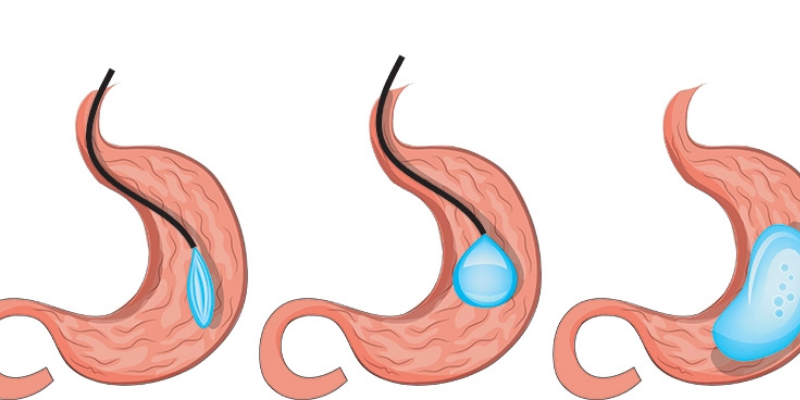Non Invasive Weight Loss Surgery
Obese persons have a BMI of 35 to 40, which makes them candidates for non invasive weight loss surgery options. It should be emphasize, however, that just because someone has a BMI in the qualifying range does not mean they will be able to undergo some of these procedures. After conventional methods of weight loss, such as eating and exercise, have fail to produce any substantial results, weight loss surgery should be consider. These procedures range from the most intrusive to the least invasive.
What Are Non Invasive Weight Loss Surgery Options?
While there have been remarkable developments in fat reduction techniques and the creation of non-surgical and non-invasive alternatives, finding the finest non-surgical weight loss methods can be a bit more challenging. There are a few surgical weight reduction techniques that are less invasive, but there aren’t many non-surgical weight loss methods. The non-surgical gastric balloon, on the other hand, is one of them.
Many variables can contribute to obesity, including genetics, emotions, friends and family, lifestyle, and medical issues. Diet and exercise alone may not be enough to achieve long-term weight reduction. The majority of applicants quickly regain their weight. That is why individuals look for weight loss methods that will work best for them.
Surgical weight loss techniques, however, can have frightening adverse effects that might cause irreversible, long-term damage to your health. While there aren’t many non invasive weight loss surgery options, there are several that may be use in conjunction with the gastric balloon, a non-surgical weight loss technique.
Gastric Sleeve
Through a tiny incision, a large portion of the stomach is remove. A laparoscopic procedure that is minimally invasive. The part of the stomach that produces the hunger hormone is eliminate. Patients have a decrease appetite.
With the gastric sleeve, no device is insert. Gastric bypass is a more complicate treatment. Food intolerances are less common than with a gastric band. There will be no intestinal rerouting. Weight reduction is faster than gastric banding. Teenagers age 14 and above are welcome to participate.
30 to 50 percent of extra weight is lost in the first six to twelve months, with a total reduction of 50 to 70 percent in two years.
Gastric Banding
This technique is less invasive since it entails utilizing laparoscopic equipment to place a lap band in the stomach through tiny incisions. The band takes up the most of your stomach, decreasing the quantity of food and calories you consume. Even a couple of ounces of food makes you feel full. Because the portion of the stomach responsible for hunger hormones is affect, satiety is diminish, and you eat less, resulting in weight loss.
Endoscopic Sleeve
The treatment entails creating tiny stitches in the stomach in the shape of a sleeve, utilizing an endoscopic camera and a suturing instrument insert through the patient’s lips, as the name indicates. Due to a lower fullness level, the sleeves shrink the size of your stomach, resulting in a reduction in the amount of food and calories you consume. This is because even a few ounces of food a day makes you feel fuller. The operation has been shown to be effective in the vast majority of individuals who have had it done, with the only adverse effects being nausea and stomach pain. Other weight-loss approaches, such as excellent food habits and workouts, must be use in conjunction with the treatment.
Gastric Bypass
The operation entails removing the bigger sections of the stomach and small intestines to create a tiny pouch, as the name implies. The pouch or surviving stomach is connect to the large intestine, bypassing the small intestine. Because the small intestine absorbs the majority of calories, the remaining little segment of the small intestine absorbs only a few calories, while the stomach decrease minimizes the quantity of food you consume. Gastric bypass, when combine with other weight-reduction routines, results in considerable weight loss.
It is crucial to highlight, however, that as easy as some treatments may appear, especially noninvasive procedures, they should not be perform on those who have high blood pressure, heart disease, or diabetes. The majority of them do not have substantial consequences unless there is an underlying problem that neither the patient nor the surgeon is aware of. As a result, you should submit your medical history to your doctor and do your best to divulge all of your health concerns.
Best Non Invasive Weight Loss Surgery
The gastric balloon is the greatest non invasive weight loss surgery. It is fully non-surgical and has a low level of invasiveness. The body is free of cuts or microscopic holes. By swallowing or via an endoscopic tube, a deflate gastric balloon is introduce through the mouth (depending on what doctor you choose). Orbera, ReShape, and Obalon is three varieties of balloons offer in the United States. It takes roughly 20 to 30 minutes to finish each treatment. It passes via your esophagus and into your stomach.
When it lands in your stomach, it expands to fill part of the empty space. Aside from being a non-surgical option, physicians and patients agree that it is a safer alternative to the gastric sleeve, gastric bypass, and even the Lap-Band. Despite the fact that it is non-surgical, it nevertheless results in significant weight reduction while enabling you to eat anything you want, feel fuller for longer, and minimize your appetite.
The patient is allowed to leave the hospital on the same day as the balloon treatment. Therefore, the patient does not need to stay overnight. It takes three days to fully heal; this was faster than alternatives to the gastric balloon, such as a bypass or tube. It can then take weeks or months to heal.
Doctors will be asked to recommend a 14-day transition diet with minor dietary restrictions. When you choose to pop the bubble, the diet switch will benefit your future health. It will help you quickly get started with improved eating and lifestyle habits. The balloon will be removed after 6 months.
The Most Non-Invasive Weight Loss Surgery: Does it Even Exist?
Weight loss surgery types are many. However, ‘the most non-invasive weight surgery’ depends on the patient’s health, BMI, and needs. In general, laparoscopic gastric banding is considered one of the least invasive weight loss operations. It inserts a band around the stomach and creates a small pouch to limit calorie consumption and food intake. Laparoscopic gastric banding does not cut nor staple the stomach. The band can be removed if deemed necessary. The complications associated with laparoscopic gastric banding are lower than other weight loss surgery, including causing nutritional deficiencies.

Two other common non-invasive weight loss surgery types are gastric banding and sleeve gastrectomy. They significantly involve low risk and rapid recovery time compared to gastric bypass surgery. Nevertheless, you should discuss all your options with a healthcare provider. You may or may not be eligible for laparoscopic surgery. The gastric sleeve may be right for you, or maybe bypass. The necessary qualifications for weight loss surgery can be determined by your doctor. We hope you learned how the most non-invasive weight loss surgery might be determined and some types of surgery that may help you make an informed decision.





